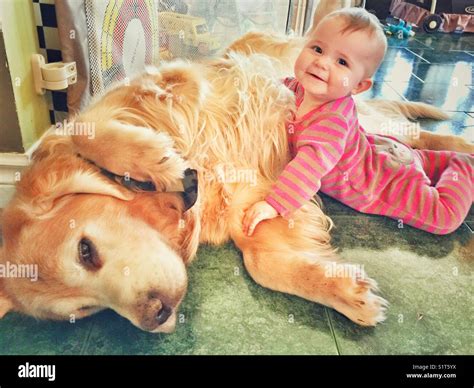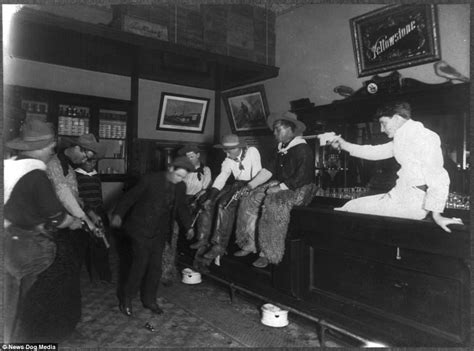
A crucial, often-overlooked step at the airport, according to travel expert Samantha Brown, is taking a photo of your checked luggage before handing it over to airline staff. This simple measure can prove invaluable in the event of lost or delayed baggage, providing concrete evidence of its appearance and contents.
Travel guru Samantha Brown emphasizes the importance of documenting checked baggage before relinquishing it to airline personnel, advocating for a pre-flight photograph as a proactive measure against potential luggage mishaps. Brown, renowned for her extensive travel experience and practical advice, highlighted this tip as a critical element of smart travel in a recent interview, emphasizing that while most bags arrive safely, the possibility of loss or delay necessitates preparedness. The photograph serves as a visual record, facilitating the identification process and aiding in the filing of claims with airlines.
Brown elaborates that a photo of your luggage, both inside and out, can significantly expedite the process of locating and recovering lost items. In the unfortunate circumstance that your bag goes missing, the image acts as a definitive reference point for airline staff, enabling them to accurately search for your specific luggage amidst the sea of similar-looking bags. Furthermore, the internal photo provides a detailed inventory of the contents, assisting in the accurate assessment of potential losses for insurance purposes.
The travel host underscores that taking pictures of your baggage before checking it in is a simple yet powerful preventative measure that can save travelers considerable time, stress, and money in the long run. Brown shared, “Take a picture of your luggage before you check it. If you have to file a claim, you have a picture of what it looks like.”
Beyond the immediate benefits of identification and claim filing, Brown’s recommendation speaks to a broader principle of proactive travel planning. By taking a moment to document your luggage, you are essentially creating a safety net that can mitigate the impact of unforeseen circumstances. In an era of increasingly complex travel logistics, such simple precautions can make a significant difference in ensuring a smooth and stress-free journey.
Benefits of Photographing Your Luggage
The practice of photographing luggage before check-in offers a multitude of benefits, ranging from enhanced identification to streamlined claims processing. Understanding these advantages can further underscore the value of this simple yet effective travel tip.
-
Enhanced Identification: In the event of lost or delayed baggage, a photograph provides an immediate and accurate visual representation of your luggage. This visual aid significantly enhances the ability of airline staff to identify your bag, especially in situations where luggage tags have been lost or damaged.
-
Streamlined Claims Processing: Filing a claim for lost or damaged luggage can be a complex and time-consuming process. A photograph of your luggage and its contents provides concrete evidence of its condition and value, simplifying the claims process and potentially expediting reimbursement.
-
Inventory Documentation: A photograph of the inside of your luggage serves as a detailed inventory of its contents. This is particularly useful for accurately assessing the value of lost or damaged items, especially when dealing with insurance claims.
-
Reduced Stress: Knowing that you have a visual record of your luggage can provide peace of mind and reduce stress during travel. In the event of a baggage mishap, you can rest assured that you have taken proactive steps to facilitate its recovery.
-
Assistance in Location Efforts: If your luggage is misdirected or lost, providing the airline with a photograph can significantly aid in their search efforts. The visual representation can help them quickly identify your bag in sorting facilities or other locations.
Practical Steps for Photographing Your Luggage
Taking a photograph of your luggage is a quick and easy process that requires minimal effort. However, following a few simple steps can ensure that you capture the most useful and informative images.
-
Exterior Shot: Begin by taking a clear, well-lit photograph of the exterior of your luggage. Ensure that the entire bag is visible, including any distinctive features such as logos, patterns, or personalized tags.
-
Interior Shot: Open your luggage and take a photograph of the contents. Arrange the items in a way that allows for easy identification. If possible, take multiple photos to capture different layers of items.
-
Close-Up of Tags: Take a close-up photograph of your luggage tag, ensuring that the barcode and any identifying information are clearly visible.
-
Receipts and Valuables: If you are carrying valuable items, consider taking separate photographs of receipts or other documentation that can help establish their value.
-
Storage: Store the photographs securely on your smartphone, computer, or in the cloud. Consider creating a dedicated folder for travel-related documents.
-
Share with Travel Companion: If you are traveling with a companion, share the photographs with them as an additional precaution.
Common Luggage Mishaps and How to Prepare
Luggage mishaps can occur for a variety of reasons, ranging from airline errors to unforeseen circumstances. Understanding the most common causes of lost or delayed baggage can help you take proactive steps to minimize your risk.
-
Misdirected Luggage: This is one of the most common causes of lost luggage. Bags can be accidentally routed to the wrong destination due to errors in tagging or sorting.
-
Delayed Transfers: If you have a connecting flight, your luggage may not have enough time to be transferred to the next plane, resulting in a delay.
-
Lost Luggage Tags: Luggage tags can become detached during transit, making it difficult to identify the owner of the bag.
-
Theft: While relatively rare, theft can occur at airports or during transit.
-
Damage: Luggage can be damaged during handling, particularly if it is fragile or improperly packed.
Tips for Minimizing Luggage Mishaps
-
Arrive Early: Allow ample time for check-in and baggage handling.
-
Remove Old Tags: Remove any old luggage tags from your bag to avoid confusion.
-
Double-Check Tags: Verify that the correct destination is printed on your luggage tag.
-
Use Durable Luggage: Invest in high-quality luggage that can withstand the rigors of travel.
-
Pack Appropriately: Pack fragile items carefully and consider using protective padding.
-
Consider Travel Insurance: Travel insurance can provide coverage for lost or delayed baggage.
-
Use Tracking Devices: Consider using a luggage tracking device to monitor the location of your bag.
The Broader Context: Lost Luggage Statistics and Airline Responsibilities
While the vast majority of checked bags arrive safely at their destination, lost or delayed luggage remains a persistent issue in the travel industry. Understanding the statistics and the responsibilities of airlines can help you navigate the process in the event of a mishap.
According to recent industry reports, the rate of mishandled baggage varies depending on the airline and the region. However, the overall trend has been towards improvement in recent years, thanks to advancements in baggage handling technology and improved tracking systems.
Airlines are legally responsible for mishandled baggage under the Montreal Convention, an international treaty that governs air travel. The convention sets limits on the amount of compensation that airlines are required to pay for lost, delayed, or damaged baggage.
Travel Insurance for Lost Luggage: Is It Worth It?
Travel insurance can provide valuable coverage for lost or delayed baggage, offering financial protection and peace of mind. However, it’s essential to understand the scope of coverage and weigh the costs and benefits before purchasing a policy.
Most travel insurance policies offer coverage for the following:
-
Lost Luggage: Reimbursement for the value of lost items, subject to policy limits and exclusions.
-
Delayed Luggage: Reimbursement for essential items purchased while your luggage is delayed, such as toiletries and clothing.
-
Damaged Luggage: Reimbursement for the cost of repairing or replacing damaged luggage.
When deciding whether to purchase travel insurance for lost luggage, consider the following factors:
-
Value of Your Belongings: If you are traveling with valuable items, such as electronics or jewelry, travel insurance may be worth the investment.
-
Trip Duration: For longer trips, the risk of luggage mishaps increases, making travel insurance a more attractive option.
-
Policy Limits and Exclusions: Carefully review the policy details to understand the limits of coverage and any exclusions that may apply.
-
Cost of the Policy: Compare the cost of the insurance policy with the potential benefits to determine if it is a worthwhile investment.
Alternative Strategies for Protecting Your Belongings
In addition to photographing your luggage and considering travel insurance, there are other strategies you can employ to protect your belongings during travel.
-
Pack Light: The less you pack, the less there is to lose. Consider packing only essential items and shipping non-essential items to your destination.
-
Carry-On Essentials: Pack essential items, such as medication, toiletries, and a change of clothes, in your carry-on bag.
-
Use a Luggage Tracker: Consider using a luggage tracking device to monitor the location of your bag in real-time.
-
Label Your Luggage: Clearly label your luggage with your name, address, and contact information.
-
Use a Distinctive Bag: Choose a bag that is easily identifiable, such as one with a unique color or pattern.
Samantha Brown’s Other Travel Tips
Beyond her advice on photographing luggage, Samantha Brown offers a wealth of travel tips and insights gleaned from her years of experience exploring the globe. Here are a few additional recommendations:
-
Embrace the Unexpected: Be open to spontaneous adventures and unexpected detours. Some of the most memorable travel experiences come from straying off the beaten path.
-
Connect with Locals: Engage with locals to gain a deeper understanding of the culture and customs of your destination.
-
Learn Basic Phrases: Learning a few basic phrases in the local language can go a long way in enhancing your travel experience.
-
Pack Smart: Pack versatile clothing items that can be mixed and matched to create different outfits.
-
Stay Hydrated: Drink plenty of water, especially during long flights and in hot climates.
-
Be Respectful: Respect local customs and traditions.
-
Take Your Time: Don’t try to cram too much into your itinerary. Allow yourself time to relax and soak in the atmosphere.
Impact of Technology on Luggage Handling
Technological advancements are revolutionizing the way airlines handle luggage, leading to improved tracking, reduced mishandling rates, and a more seamless travel experience.
-
RFID Technology: Radio-frequency identification (RFID) technology is being increasingly used to track luggage throughout the baggage handling process. RFID tags can be read remotely, providing real-time information on the location of each bag.
-
Automated Baggage Handling Systems: Automated baggage handling systems use sophisticated conveyor belts and scanners to sort and route luggage efficiently. These systems reduce the risk of human error and speed up the baggage handling process.
-
Mobile Apps: Many airlines offer mobile apps that allow passengers to track their luggage in real-time. These apps provide updates on the status of your bag, from check-in to arrival.
-
Artificial Intelligence: Artificial intelligence (AI) is being used to optimize baggage handling processes and predict potential delays. AI algorithms can analyze data from various sources to identify patterns and predict potential disruptions.
The Future of Luggage Handling
The future of luggage handling is likely to be characterized by even greater automation, enhanced tracking capabilities, and a more personalized travel experience.
-
Biometric Identification: Biometric identification technology, such as facial recognition, could be used to streamline the check-in process and enhance security.
-
Smart Luggage: Smart luggage with built-in GPS tracking, weight sensors, and other features is becoming increasingly popular.
-
Contactless Check-In: Contactless check-in solutions, such as mobile bag tags and self-service kiosks, are becoming more prevalent.
-
Personalized Baggage Handling: Airlines may offer personalized baggage handling services, such as expedited delivery and concierge assistance.
Environmental Considerations in Luggage Production
The production and disposal of luggage can have a significant environmental impact. Consumers are increasingly seeking sustainable luggage options that minimize their environmental footprint.
-
Sustainable Materials: Luggage made from recycled materials, such as recycled plastic bottles or recycled nylon, is becoming more widely available.
-
Durable Construction: Investing in durable luggage that is built to last can reduce the need for frequent replacements.
-
Repair Services: Some luggage companies offer repair services to extend the lifespan of their products.
-
Responsible Manufacturing: Look for luggage companies that adhere to ethical and sustainable manufacturing practices.
Choosing the Right Luggage for Your Needs
Selecting the right luggage can significantly enhance your travel experience. Consider the following factors when choosing luggage:
-
Size and Weight: Choose luggage that is the appropriate size and weight for your travel needs.
-
Durability: Invest in durable luggage that can withstand the rigors of travel.
-
Features: Consider features such as wheels, handles, and compartments.
-
Style: Choose luggage that reflects your personal style.
-
Price: Set a budget and compare prices from different retailers.
By taking a proactive approach to luggage protection and choosing the right luggage for your needs, you can minimize the risk of mishaps and enjoy a smoother, more stress-free travel experience. Samantha Brown’s simple tip of photographing your luggage is a valuable reminder that a little preparation can go a long way in safeguarding your belongings and ensuring a successful journey.
FAQ
-
Why is taking a photo of my luggage before checking it in so important?
Taking a photo of your luggage before checking it in provides a visual record of its appearance and contents. This can be extremely helpful if your luggage is lost, delayed, or damaged, as it allows airline staff to quickly identify your bag and helps you accurately document the contents for insurance claims. As Samantha Brown advises, “If you have to file a claim, you have a picture of what it looks like.”
-
What kind of photos should I take of my luggage?
You should take photos of both the exterior and interior of your luggage. For the exterior, capture the entire bag, including any distinctive features like logos, patterns, or tags. For the interior, arrange the contents so they are clearly visible, and take multiple photos if necessary to capture different layers. Also, take a close-up photo of your luggage tag showing the barcode and identifying information.
-
How can a photo of my luggage help with a lost luggage claim?
A photo of your luggage helps in several ways: it provides immediate visual identification for the airline to search for your specific bag, it serves as proof of ownership, and it offers a detailed inventory of the contents, making it easier to accurately assess the value of lost or damaged items for insurance purposes. Without a photo, describing your luggage and its contents accurately can be challenging.
-
Is photographing my luggage enough to protect me from all luggage-related issues?
While photographing your luggage is a crucial step, it’s not a complete solution. Consider combining it with other protective measures like travel insurance, using luggage trackers, ensuring your luggage has clear identification tags, and packing essential items in your carry-on. Photographing your luggage is just one component of a comprehensive strategy for protecting your belongings during travel.
-
Where should I store the photos of my luggage after taking them?
Store the photos securely on your smartphone, computer, or in the cloud. Consider creating a dedicated folder for travel-related documents. Sharing the photos with a travel companion can also be a good idea as an additional precaution. This ensures that you have access to the photos even if you lose your phone or other devices.









